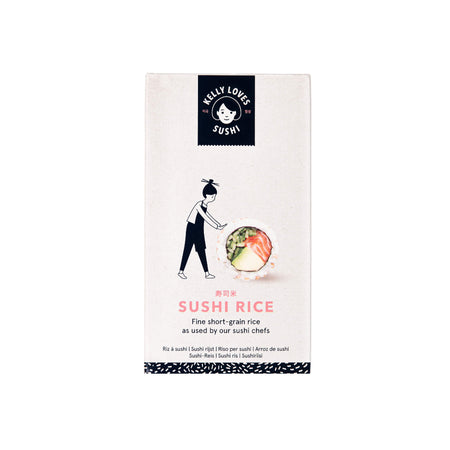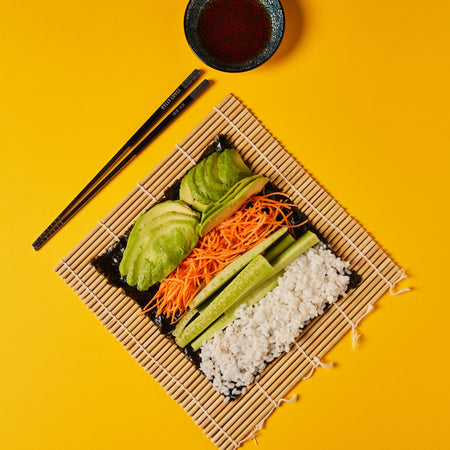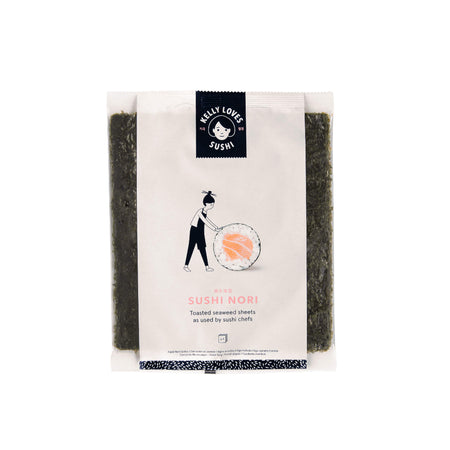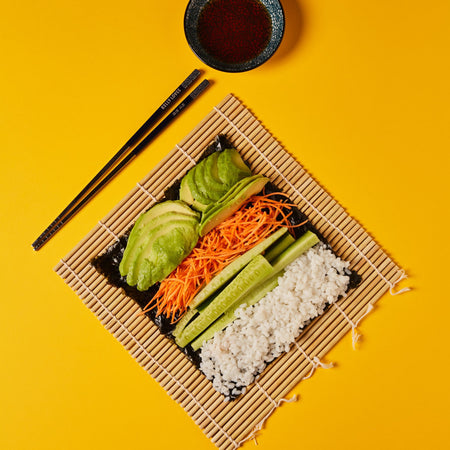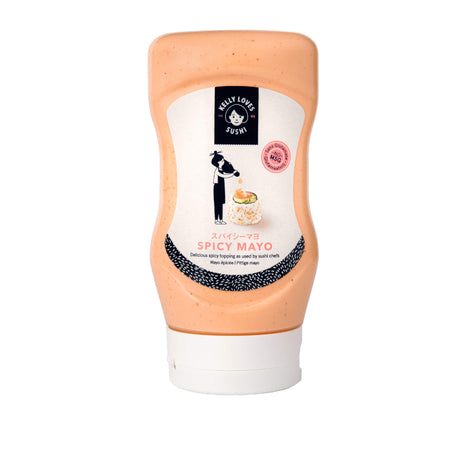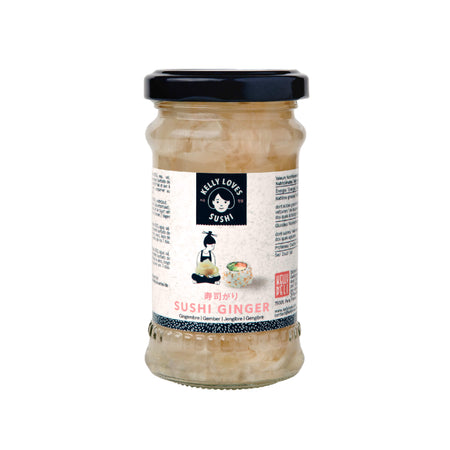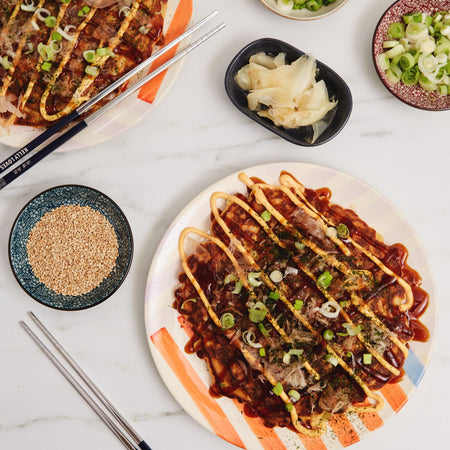Ramen vs Udon: What’s the Difference?
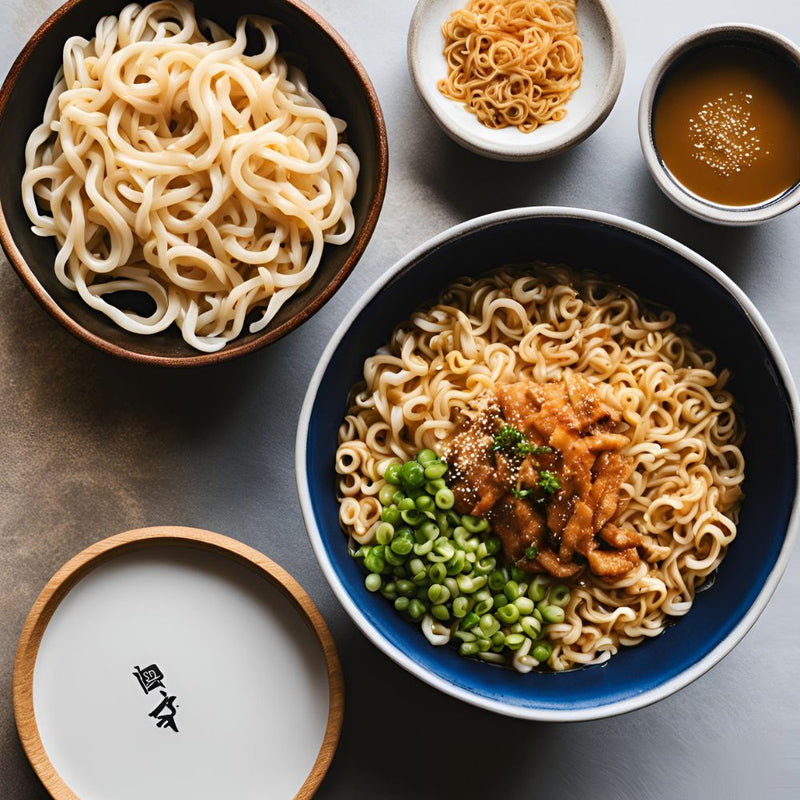
Ramen and udon are both popular noodle dishes enjoyed by foodies worldwide. Ramen is known for its thin noodles served in a flavourful broth, often with toppings like sliced pork and seaweed. Udon, on the other hand, features thick wheat noodles in a milder broth, complemented by ingredients such as tempura or tofu.
But that's not all...
Below, we explore the origins, variations, and cultural significance of both dishes, helping you choose your favourite noodle experience.
What’s the difference between ramen and udon?
At a first glance, ramen and udon may seem similar, but they're different in many subtle ways that make a huge difference to any ramen or udon enthusiast.
Ingredients
Generally, the key difference between these two dishes is their texture and mouthfeel: ramen noodles are bouncy and elastic, while udon noodles are soft yet chewy.
In fact, ramen noodles are thin, springy, and often curly, made from wheat flour, salt, water, and kansui (alkaline mineral water). This combination gives ramen its distinctive yellow colour and chewy texture. Some varieties may even include eggs, which add to their richness and colour. You can find these types of noodles in the refrigerated section of many supermarkets, as well as the ever-popular instant ramen packets on our site. Just add hot water, and you're good to go!
Udon noodles, on the other hand, are much thicker and straighter. They're made simply from wheat flour, salt, and water. But what makes udon so simple is its neutral flavour and chewy, slippery texture that readily absorbs the flavours of its broth. We also have a fantastic selection of these thicker noodles, like our katsuo udon noodles and Akagi Joshu Udon noodles, which are versatile and delicious.
Broth
Ramen broths are typically rich and complex, traditionally simmered for hours with bones, meat and all types of aromatics. Some broths you can expect to find might include:
- Shoyu (soy sauce-based)
- Miso (fermented soybean paste-based)
- Tonkotsu (pork bone-based)
- Shio (salt-based)
These broths are hearty and full-bodied, complementing the robust flavours of ramen toppings perfectly. It’s also important to note that when eating ramen, you should slurp it directly from the bowl to fully appreciate the rich flavours and textures. It's a deliciously immersive way to savour every bite. Take a look at our top tips for how to eat ramen like a pro!
Udon broths, though, are usually lighter and clearer. They're often based on dashi, a simple stock made from kombu (kelp) and bonito flakes. Udon broths can be served hot (kakejiru) or cold (tsuyu), and while they're very flavourful, they're actually designed to let the chewy noodles shine.
It must be said that there are variations for both types of dishes, with different ingredients influencing broth flavours across the world, such as the popular Korean ramen style, ramyeon.
Toppings
Ramen toppings are diverse and often substantial, turning the dish into a complete meal. Some of the most popular additions include:
- Chashu (Braised Pork Belly)
- Ajitsuke Tamago (Marinated Soft-Boiled Egg)
- Menma (Fermented Bamboo Shoots)
- Nori (Dried Seaweed)
- Green Onions
- Bean Sprouts
- Corn
- Butter In Hokkaido-Style Ramen
When it comes to udon, less is often more. The key is to let the smooth broth and thick noodles have their moment in the spotlight. So, aim for a balance of flavours and textures that complement, rather than overpower, the dish's core elements.
Toppings such as:
- Tempura
- Aburaage (Deep-Fried Tofu Pockets)
- Kamaboko (Fish Cake)
- Green Onions
- Grated Ginger
These will allow you to fully appreciate the nuanced flavours of the broth and the satisfying chew of the noodles.
History and origin of ramen and udon
Ramen, with its Chinese roots, really took off in Japan after World War II. What started as a simple bowl of noodles in broth has exploded into countless regional varieties. In fact, instant ramen was invented in 1958 by Momofuku Ando and made ramen a global phenomenon. Today, you can find over 5,000 ramen shops in Tokyo alone!
Similarly, Udon has deep roots in Japanese culinary history. But, its exact origins are also debated, with one theory suggesting introduction from China during the Nara period (710-794 AD). Another claims a Buddhist monk brought the noodles from China in the 9th century. Udon did, however, gain widespread popularity during the Edo period (1603-1867), developing distinct regional varieties across different parts of Asia, including Korea. Originally hand-cut, the noodles then later transitioned to industrial production in the 20th century.
Ramyeon vs ramen
Ramyeon, Korea's answer to ramen, has an interesting history. In the 1960s, businessman Jean Jon-Yeon created it as an affordable meal for post-war Korea, drawing inspiration from Japanese instant ramen but adding a distinctly Korean flair.
While both are noodle soups, ramyeon features thicker, chewier noodles and a spicier, more intense broth than ramen. It typically includes gochugaru (red pepper flakes) and gochujang (fermented chilli paste), creating a bolder flavour profile. Ramyeon is usually quicker to prepare, often sold as instant noodles with dried vegetables and powdered soup. It can be ready in minutes by adding boiling water.
Instant ramyeon has become a cultural phenomenon in Korea. The average South Korean enjoys an impressive 80-90 packets annually! The popularity of Korean instant noodles has even sparked global trends. Take Buldak Ramen, for instance. This ultra-spicy "fire chicken" flavour became a viral TikTok challenge, contributing to over $2 billion in sales since 2012.
While both ramyeon and ramen offer quick, satisfying meals, ramyeon's spicier profile and cultural significance make it a unique Korean culinary icon. And as the global appetite for authentic Korean flavours grows, innovative brands are continually introducing new ramyeon products to meet this demand.
Is ramen healthy?
Ramen isn't inherently unhealthy, but it's not exactly a superfood either. The noodles themselves are typically made from refined flour, which lacks the fibre and nutrients of whole grains. However, they're often filled with B vitamins and iron, giving them a bit of a nutritional boost.
You can make your ramen healthier by choosing our low-sodium broths, loading up on vegetables and adding lean proteins. Options like our kimchi ramen or our seafood ramen noodles are fantastic options.
Bone broth, found in ramen, can also support gut and joint health. But remember, moderation is key. Enjoy your ramen, but mix it up with other nutritious meals too!
What to have with ramen?
Want to take your ramen to the next level? Try tossing in some kimchi for a tangy, spicy kick. You can also go for a soft-boiled egg, slices of pork, fresh spinach, or even some nori (seaweed). But if you're craving more, pair your ramen with some tasty sides like gyoza (dumplings), crispy tempura, or a refreshing cucumber salad.
A cup of our Yuzu Green Iced Tea or iced barley tea (mugicha) is also perfect for balancing the flavours. Or, if you’re feeling fancy, a light, crisp beer or a glass of sake pairs wonderfully with ramen.
If you're working with instant noodles, boost it with low-sodium broth and fresh goodies like mushrooms, green onions, and tofu. A splash of soy sauce or sesame oil can work magic, making your quick ramen taste like it came from a top-notch ramen shop. We also have a super-tasty upgraded instant noodle recipe that you can follow at home!
Ramen and udon offer a delightful contrast in flavours and styles—ramen with its rich, savoury broths and udon with its comforting simplicity. But why settle for one when you can enjoy the delights of both? At Kelly Loves, we have a selection of noodle products that promise to satisfy every craving and culinary curiosity! Find your favourite dish today!
